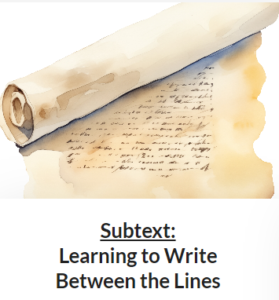Unlock the hidden layers of your writing in our latest lesson, “Writing Between the Lines: Understanding Subtext. Dive into the art of subtext and discover how to convey powerful emotions and unspoken truths without saying a word. This eye-opening video will help you understand what is subtext and why we need subtext in our family history stories. Don’t miss out—click to watch and learn about he subtle nuances that can elevate your writing from good to unforgettable!
Click Below to Learn More about Skillbuilders
